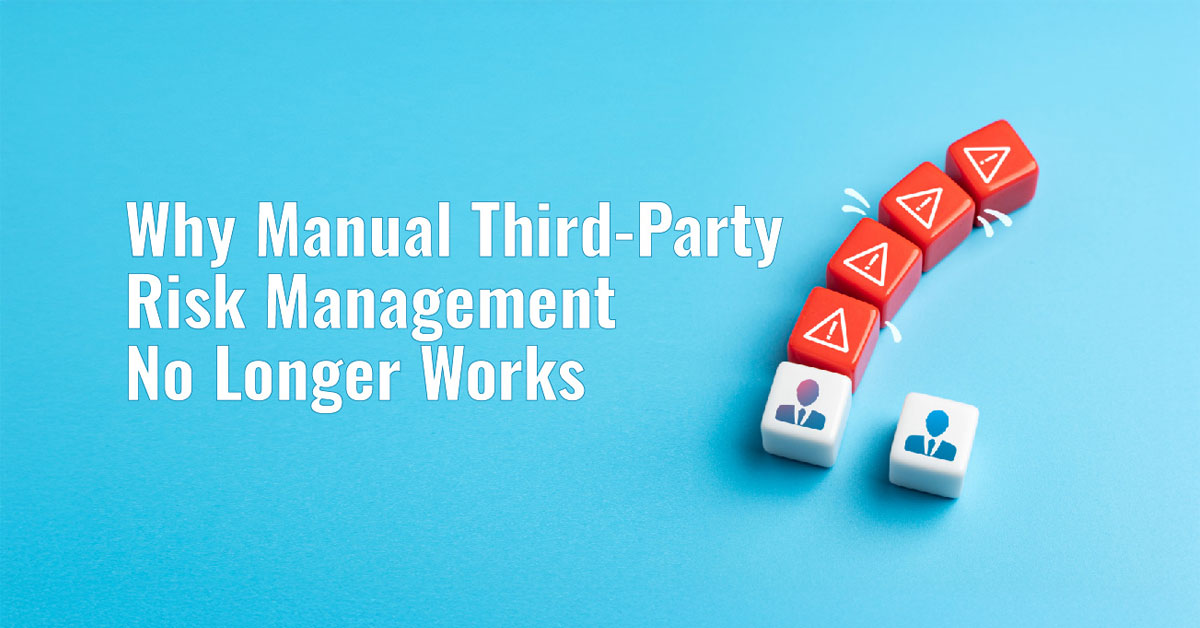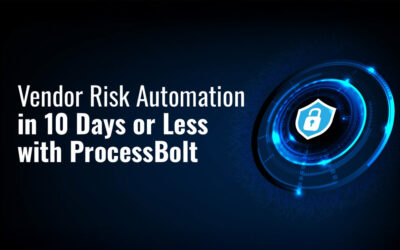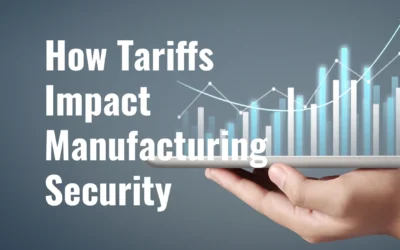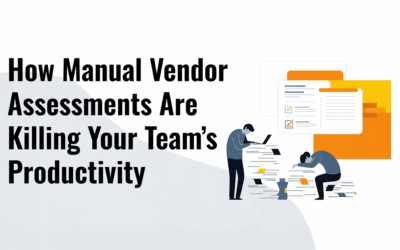While third-party risk management is a critical function, many security teams continue to rely on manual processes to manage vendor security. But while you’re chasing assessment responses, reconciling spreadsheets, and emailing reminders, it’s taking valuable time away from higher-value tasks like incident response or strategic planning.
This approach isn’t just inefficient; it’s becoming increasingly dangerous as supply chain attacks grow in sophistication and frequency.
The Limitations of Manual Vendor Risk Management
Resource Constraints
Manual vendor risk management demands significant time and attention, yet most organizations lack the resources necessary to support it. In many cases, there’s only one person managing all third-party assessments — despite overseeing dozens or even hundreds of critical suppliers.
This shortage forces security teams to triage. Instead of evaluating every vendor in proportion to its risk, assessments are prioritized based on bandwidth. That often means superficial reviews for lower-tier vendors, some of which may actually pose higher risks due to their access to sensitive systems or data.
Inconsistent and Fragmented Risk Evaluations
Manual risk assessments lack consistency across vendors and teams. Each assessment may use slightly different language, scoring criteria, or formats, and without a standardized framework, comparing vendors becomes difficult at scale.
Furthermore, different stakeholders may maintain separate records on the same vendor, leading to inconsistent or even contradictory risk profiles. One team may assume a vendor has passed a security review, while another has flagged the same vendor as high risk.
Delayed Detection of Emerging Threats
Periodic, manual assessments are just a snapshot in time — and often months apart. Meanwhile, a vendor’s security posture could change significantly, and you wouldn’t know it until the next assessment.
In between assessments, your vendors could undergo security breaches, lose key compliance certifications, or introduce new vulnerabilities without your knowledge. By the time you detect the issue, the damage may already be done.
Lack of Audit Trails and Accountability
Without an automated system to track assessments, remediation actions, and vendor communications, organizations struggle to demonstrate compliance during audits.
Files get buried in shared drives. Emails go unanswered. Assessment records aren’t updated. In the event of a regulatory review, your team may find itself unable to provide a clear timeline or paper trail — something regulators increasingly demand.
This gap is not only a compliance risk but also a reputational one. If your organization can’t demonstrate due diligence in managing third-party security, partners and customers may begin to question your broader risk posture.
Key Aspects of a Modern TPRM Strategy
Clearly, organizations must adopt smarter, faster, and more integrated approaches to third-party risk management. By incorporating artificial intelligence, automation, centralized collaboration, and real-time monitoring into your TPRM strategy, you can strengthen your program without overextending internal resources.
- Assessment Automation: Modern tools can streamline the assessment process through automated questionnaire distribution, response tracking, and evidence collection. This not only accelerates the process but also ensures consistency across assessments.
- AI for Policy Document Analysis: AI can extract key information from vendor policy documents, comparing them against assessments and dramatically reducing the time required for comprehensive reviews.
- Continuous Monitoring: Supplementing periodic assessments with continuous monitoring capabilities allows you to identify vulnerabilities, misconfigured systems, or security control failures in real time — rather than discovering them during the next scheduled assessment.
- Built-In Audit Trails: Automated audit trails capture every interaction — assessment responses, file uploads, approval decisions, remediation tracking — making compliance reporting and post-incident investigations significantly easier.
And when these capabilities are run out of a holistic system that acts as a single source of truth, you reduce miscommunication, avoid duplicated efforts, and maintain full visibility into vendor risk status.
Modernizing Your Vendor Risk Management Program
Manual vendor risk management programs are increasingly unreliable in the face of increasingly sophisticated cyber threats. Instead, automation allows you to identify and respond to risks in real time, empowering you to protect your organization against third-party risks while ensuring compliance with regulatory requirements.
ProcessBolt is designed to streamline your VRM processes, providing real-time insights that help you maintain a strong third-party security posture.




